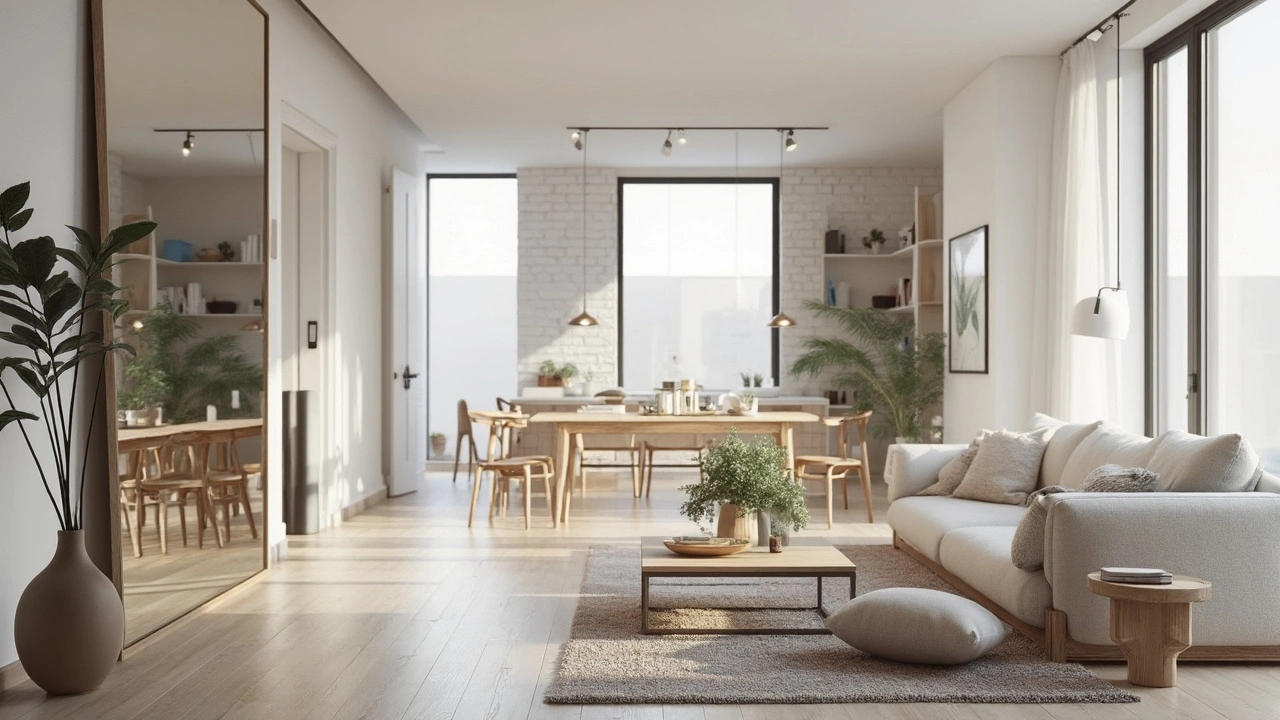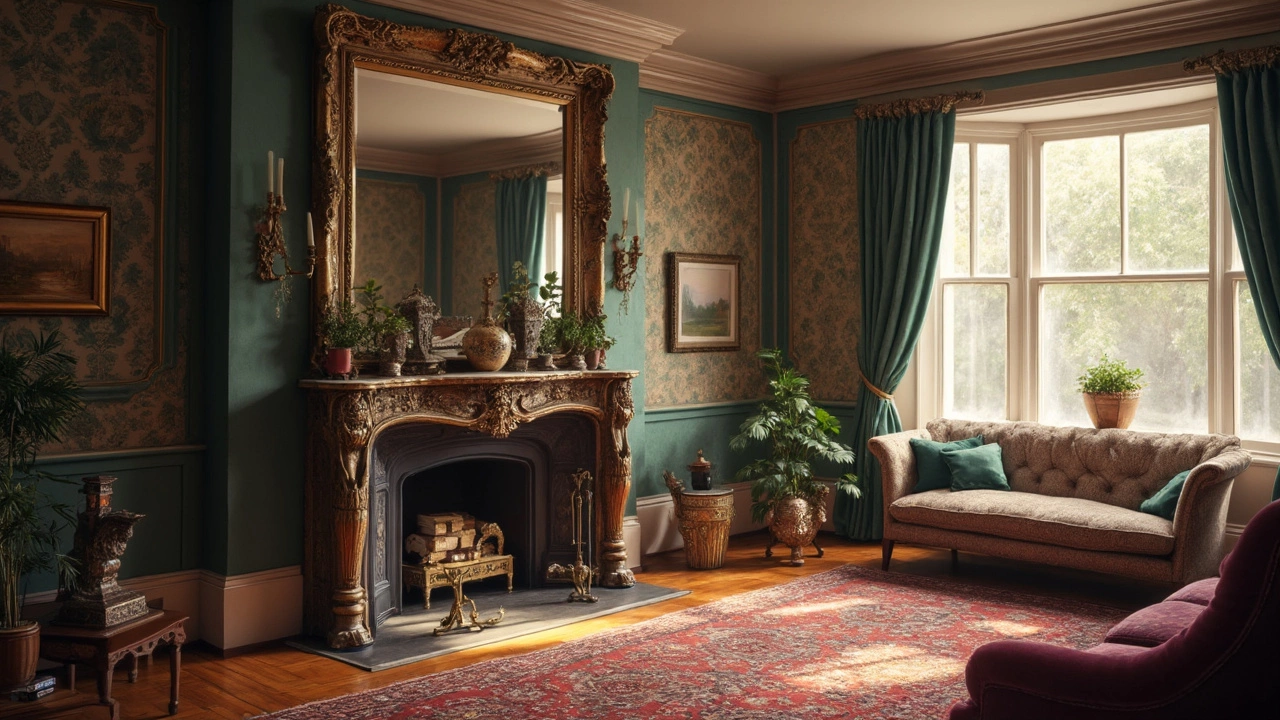So, you're thinking about getting a mirror? First up, let's remember, not all mirrors are created equal. It's a strange thought, but the size of a mirror doesn't just reflect what's in front of it; it changes how a room feels. Seriously, the right mirror can make spaces look bigger, lighter, and even a bit more stylish. But how do you land on the 'perfect' size?
Let's dive into your room's vibe first. Do you want a mirror that screams 'look at me' and becomes a centerpiece, or are you after a subtle but bright addition? Now, think about the room's size. In a tiny space, a large mirror can create an illusion of depth. In a bigger room, you might want multiple mirrors for different focal points. They don't just sit pretty; they bounce light around, opening up the room in a way you've got to see to believe.
- Why Mirror Size Matters
- Determining Your Mirror's Purpose
- Proportions and Placements
- Style Tips for Mirror Selection
Why Mirror Size Matters
Alright, let’s get into it. Ever walked into a room and just felt the space open up? That could very well be the magic of a well-sized mirror doing its thing. The size of a mirror can majorly influence the vibe of a room in several ways.
Here's the deal: a larger mirror covers more wall area, which can instantly make a room feel bigger and more open. This is especially handy in smaller rooms where every inch matters. Large mirrors create an illusion that pushes the walls out, giving the room a spacious touch. It's not just a visual trick; mirrors reflect light, naturally brightening a space, which can dramatically change the atmosphere.
However, it's not always about going big. In a large room, sometimes the right smaller or medium-sized mirrors strategically placed can create unique focal points or highlight art pieces and other décor items. You wouldn’t believe how a well-placed mirror over a fireplace or a console can pull a whole look together. Plus, it helps emphasize the color scheme and texture of the room.
Let’s talk some numbers. While subjective to personal style, a handy rule is to cover at least half to two-thirds of the wall space above furniture with your mirror. For instance, if you have a sofa that's 6 feet long, a mirror about 3-4 feet wide can be a stunning partner. This proportion balances the scale visually, making the room appear cohesive.
And don’t forget, the function matters too. A full-length mirror in the bedroom or dressing area isn’t just functional for getting dressed but can add an elegant vertical line that complements your furniture setup.
So, choosing the right mirror size is less about following strict rules and more about understanding what vibe you want and how your mirror fits into that vision. Whether you’re going for cozy or grand, mirrors are your secret weapon!
Determining Your Mirror's Purpose
Before you run out and grab that shiny new mirror, it's key to know why you need it in the first place. Are you aiming to brighten up a gloomy hallway or creating the illusion of space in a snug little bathroom? Your intentions will steer you towards the perfect choice.
If you're looking to add more light and create a sense of openness, a large wall-mounted mirror might be your best bet. They can really open things up and make natural and artificial light dance around.
But if it's all about function, like checking your outfit before heading out, then a full-length mirror is just what you need. Mirror size here is important to capture the entire you, from head to toe.
An accent mirror, on the other hand, might be more about aesthetics. Maybe it’s going to hang above your couch or fireplace to draw in some style points? In this case, your focus should be on the frame and shape, as this will contribute to the room's overall decor while still reflecting its function.
Finally, mirror placement plays a role too. Placing mirrors opposite windows will bring in more light, while positioning them on the side walls can elongate the room. Identifying these little goals beforehand will ensure your mirror choice doesn’t just fill an empty wall but actually enhances it!
- Brighten up a hallway: Opt for large mirrors or mirror walls.
- Check your looks: Full-length mirrors do the trick.
- Add style accents: Choose framed or shaped mirrors.
- Expand space visually: Use mirror size strategically.

Proportions and Placements
Getting the mirror size right isn’t just about aesthetics; it’s a balancing act. When you hang a mirror, think about what's surrounding it. A giant mirror above a narrow console can feel top-heavy, while a small mirror on a large wall might go unnoticed. It’s like choosing the right-sized frame for a painting—it needs to fit the scale of what's around it.
One golden rule? Keep your mirror about two-thirds the width of the furniture it's hovering above. It creates a balanced look that’s pleasing to the eye. For example, if your sofa is six feet long, consider a mirror that's roughly four feet across.
And let's talk eye level. You don’t want to be tiptoeing just to catch a glimpse of your fabulous self. Hanging a mirror so the center is about five feet off the ground usually works for most people’s heights. But hey, if you’re playing with a collection of mirrors or a floor-length piece, you’ve got more wiggle room.
When it comes to mirror placements, think strategic, not just decorative. In the hallway, a mirror by the door is perfect for quick outfit checks. In the dining room, it can create the illusion of extra guests at your next dinner party. And in bedrooms, mirrors on closet doors save space and let you see the full picture.
Got a particularly dark room? Place mirrors opposite a window to bounce natural light around, brightening things up without switching on a single bulb. Plus, pairing mirrors with lamps can really help spread light into every corner.
Style Tips for Mirror Selection
Picking the right mirror is a fun process, and it's all about adding that finishing touch to your decor. Whether you're eyeing a minimalist design or a vintage piece, mirrors can do wonders in sprucing up your place. So, how do you make sure the mirror blends well with your home's style?
First, consider the frame. A mirror's frame can make a massive difference. If your space leans towards modern, think sleek, thin frames, or even frameless options. But if you love a more traditional vibe, ornate or wooden frames might be your best bet.
Second, the shape isn't just about aesthetics; it affects how a room feels. A round mirror often softens up a space, making it feel cozy and approachable, while a rectangular mirror gives a room a structured, refined look. For those bold enough, geometric shapes or asymmetrical designs can add a hint of modern quirkiness.
You don't always have to hang a mirror. Leaning a large mirror against the wall can instantly create drama and depth, especially in a bohemian or eclectic living room. Just make sure it's securely positioned to avoid any accidents.
Finally, don't forget about the surrounding decor. Your mirror can reflect not just light but also the colors and shapes of the room. If you have a statement piece, position the mirror to highlight it. Consider where natural light falls throughout the day to really maximize the brightening effect.
- Frame Style: Choose according to your room's decor style.
- Mirror Shape: Decide based on the look you aim to create.
- Placement: Hanging or leaning, both can have different effects.
- Lighting and Reflection: Use mirrors to capture and spread light, and think about what image they'll reflect.
And there you have it, a few style hacks that'll help you choose a mirror that not only complements your space but also enhances it. Happy decorating!

